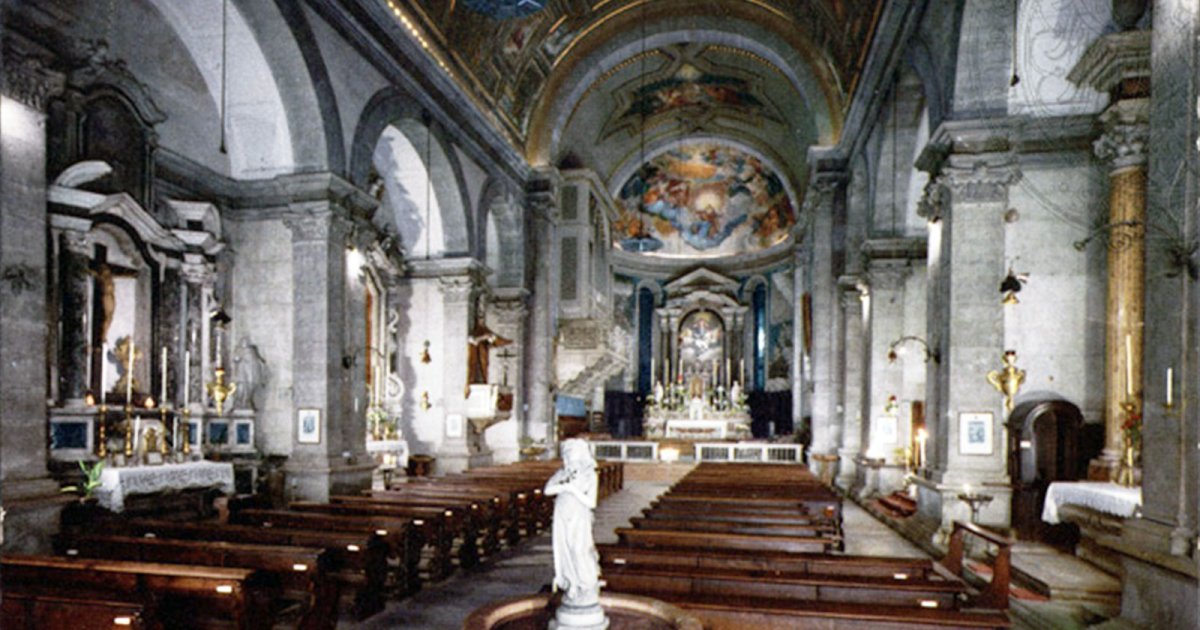SANTA MARIA MAGGIORE, Interior
 Language: English / USA
Language: English / USA
As you can see, the church has a magnificent single-nave interior, flanked by a number of chapels. Just try to imagine this huge nave packed with ecclesiastical figures intent on discussing how to reform the Church, in response to the unprecedented challenge set off by Martin Luther with the advent of Protestantism.
This was the scene inside the walls of the basilica for over a year and a half, from April 1562 to December 1563, during the third and final phase of the Council of Trent.
Traces of this important event can still be seen today in a number of paintings depicting the sessions, featuring the scenes and the characters that played a part in them; these scenes are also immortalized in the frescoes that embellish the vaults above the nave, painted in 1902 by Sigismondo Nardi. These are not the original vaults of the sixteenth-century church, which suffered a collapse at the beginning of the 19th century.
Another distinctive feature of the basilica is the absence of a transept, the rectangle that generally intersects churches between the nave and the altar to give them a cross shape. The ground plan, designed by the architect responsible for the original building work in the 16th century, Antonio Medaglia, was inspired by the one designed by Leon Battista Alberti for Sant’Andrea in Mantua, a masterpiece of Renaissance architecture, also without a transept.
Bernardo Clesio was personally familiar with the church in Mantua, with which he sought to create an explicit link in order to usher in a new form of Humanist Renaissance art in the Trentino area under his guidance as prince-bishop.
I suggest you take a walk around the nave to admire the sumptuous marble altars and the altarpieces in the Baroque side chapels.
Near the altar, make sure you take a moment to admire the striking Baroque pulpit with a baldachin, and the pipe organ, crafted in 1928 to replace the original organ. Equally impressive is the space dedicated to the sixteenth-century choir, in marble with bas-relief decorations.
An interesting fact: at the beginning of the 18th century, this church hosted a concert by the great Baroque composer Georg Friedrich Händel, who came to Santa Maria Maggiore to play the organ, one of the finest in the world at the time.
Our visit to the Basilica of Santa Maria Maggiore ends here. MyWoWo would like to thank you - see you again at another Wonder of the World!



